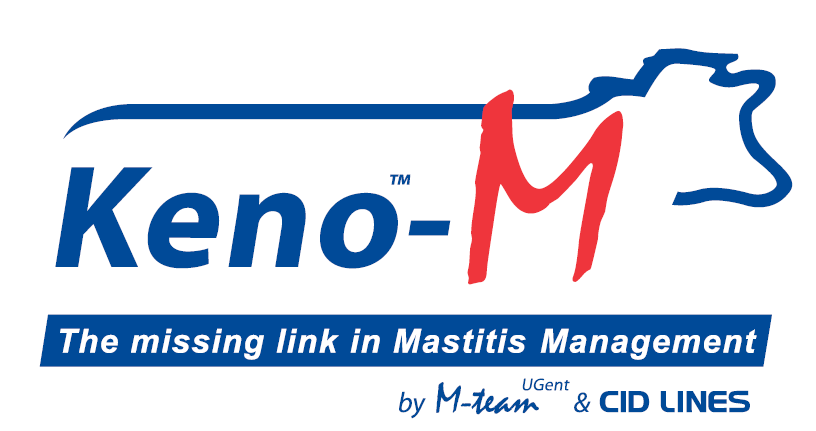
© Copyrights by Mexcellence BV.
All Rights Reseved/Alle Rechten Voorbehouden/
Tous Droits Réservés

Excellence in mastitis management
Driven by passion, inspired by science, and strengthened by experience, we work to create holistic, integrated solutions for an easy and successful mastitis management on every dairy farm
Exclusive partner in mastitis management for vets and dairy advisors
Upcoming webinar series
Severe clinical mastitis: What's up?
Three sessions on the pathogenesis, prevention, and treatment of severe clinical mastitis including Q&A sessions.
Severe clinical mastitis is an extremely annoying and frustrating form of mastitis. Cows develop rapidly severe symptoms of clinical mastitis, and even aggressive treatments are rarely successful. The cow goes in shock, dies or loses the affected quarter. The reason for this webinar is that last summer, we were again confronted with several outbreaks of severe clinical mastitis on different farms. During these three sessions, we will elaborate on the pathogenesis, prevention and treatment of severe clinical mastitis based on available scientific knowledge and practical experience.
This webinar serie consists of three sessions.
Tue October 31 2023, at 06:30 pm
What is happening in case of severe clinical mastitis?
Tue November 7 2023, at 06:30 pm
How to prevent severe clinical mastitis in dairy cows?
Mon November 13 2023, at 06:30 pm
How to treat severe clinical mastitis in dairy cows?
The sessions will be recorded and made available afterwards to everyone who has registered. During the replay, you will have the possibility to ask questions. The questions will then be answered as soon as possible via email.
You can subscribe for these three webinar sessions by clicking on the button "Claim your seat". The registration fee is 89 € (incl. VAT) for the three webinar sessions. The sessions will be recorded and made available afterwards to everyone who has registered. During the replay, you will have the possibility to ask questions. The questions will then be answered as soon as possible via email.
Payment can be done via PayPal or credit card (VISA, Mastercard, ...).
Streptococcus uberis mastitis: What's up?
Three sessions on the ecology & epidemiology, prevention and treatment of Streptococcus uberis mastitis including Q&A sessions.
Streptococcus uberis is one of the most prevalent major mastitis pathogens worldwide. Streptococcus uberis used to be a typical environmental mastitis pathogen mostly causing transient intramammary infections. Nowadays, there is evidence that Streptococcus uberis can be both environmental and contagious. Also, some strains seem to be more host-adapted than others and have the capability to cause persistent infections that are more difficult to successfully treat. During these three sessions, we will elaborate on the ecology & epidemiology of Streptococcus uberis, and the implications for the approach, prevention and control of Streptococcus uberis mastitis in the field.
This webinar serie consists of three sessions.
Tue December 5 2023, at 06:30 pm
What is happening in case of severe clinical mastitis?
Tue December 12 2023, at 06:30 pm
How to approach and prevent Strep. uberis mastitis?
Tue December 19 2023, at 06:30 pm
How to treat Strep. uberis mastitis?
The sessions will be recorded and made available afterwards to everyone who has registered. During the replay, you will have the possibility to ask questions. The questions will then be answered as soon as possible via email.
You can subscribe for these three webinar sessions by clicking on the button "Claim your seat". The registration fee is 89 € (incl. VAT) for the three webinar sessions. The sessions will be recorded and made available afterwards to everyone who has registered. During the replay, you will have the possibility to ask questions. The questions will then be answered as soon as possible via email.
Payment can be done via PayPal or credit card (VISA, Mastercard, ...).
Frequently asked questions about mastitis in dairy cattle
Below you can find the answers to some frequently asked questions about mastitis in dairy cattle.
1. General
Some answers to frequently asked questions about mastitis in general
Mastitis is an inflammation of the udder. Most mastitis cases are caused by intramammary infections. In rare cases, mastitis might be caused by trauma (e.g. kick of another cow on the udder) or irritation (e.g. contact with a chemical product).
Most intramammary infections are caused by bacteria present in the environment of the cow that penetrate via the teat orifice into the udder. Exceptions are intramammary infections caused by Mycoplasma species. Dairy cows may already be colonised by Mycoplasma bovis in the respiratory tract. A stress stimulus (e.g. calving, moving to another barn) can cause a haematogenic (= via the blood) spread of the Mycoplasma bacteria from the respiratory system to the udder. Because of this haematogenic spread, several quarters are often affected simultaneously in case of Mycoplasma mastitis. Another exception are the iatrogenic infections caused by yeasts or moulds. Iatrogenic infection means that during insertion of an intramammary tube (e.g. one containing antibiotics) for the treatment of a primary mastitis case or at dry-off, yeasts or moulds are introduced from the teat skin into the teat canal and the udder. Primary cases of mastitis caused by yeasts or moulds also occur but are rather rare.
Mastitis occurs after the invading germs in the udder are recognised by the resident inflammatory cells (neutrophils, macrophages, natural killer cells) in the milk and the mammary epithelial cells. The receptors on the cell wall of the inflammatory cells (Pathogen Recognition Receptor or PRR) recognise the molecules in the cell wall of the bacteria (Pathogen Associated Molecular Patterns or PAMP). After the identification of the invading bacteria, the inflammatory cells in turn produce pro-inflammatory cytokines (IL-8, TNF-alpha), attracting masses of neutrophils from the blood to the milk. Together with the other inflammatory cells, these neutrophils will phagocytose (= eat) the bacteria and eliminate them from the udder.
As indicated earlier, in case of mastitis, a large number of immune cells migrate from the bloodstream to the milk. Based on the presence or absence of visible symptoms, two forms of mastitis are distinguished: clinical mastitis and subclinical mastitis. In case of clinical mastitis, the milk (flakes, blood in the milk, watery) and/or the udder (hard, swollen, painful, red or warm) show visible abnormalities and the cow might be generally ill (fever, loss of appetite, deep lying eyes, sluggish). Cows with clinical mastitis can therefore be easily identified.
In case of subclinical mastitis, neither the milk nor the udder show visible abnormalities. The cow is not generally ill. Cows with subclinical mastitis can best be detected by regularly determining the individual somatic cell count of all cows in the barn. Cows with a somatic cell count of more than 200 000 cells/ml are most likely infected in one or more quarters.
Our virtual assistant Keno™-M calculates with one mouse click the percentage of subclinical mastitis in a dairy herd and provides support in the interpretation of results. Based on the individual cell count records, various key indicators can be calculated. Interpretation of these key figures helps in identifying the farm-specific cause of a high bulk milk somatic cell count. Click here for more info.
No, not all cows with clinical mastitis have fever. Based on the clinical symptoms, 3 types of clinical mastitis can be distinguished: mild (Grade A), moderate (Grade B) and severe (Grade C).
In a cow with mild clinical mastitis, the milk is abnormal (flakes, lumps, blood admixture), but the cow is not generally ill. The cow has a normal appetite and has no fever.
In case of moderate clinical mastitis, besides the abnormal aspect of the milk, the udder might be hard, swollen, painful, red, or feeling warm, a body temperature below 39,5°C, and there might be a slight fall in milk production.
A cow with severe clinical mastitis has strongly abnormal (sometimes watery) milk, is languid, has a moderately to poorly filled rumen, deep-lying eyes, has a severe body temperature increase (higher than 39,5°C) or just a very low body temperature (= shock) and produces hardly any milk.
With our virtual lab assistant MEX@LAB, it is very easy to keep track of how many clinical mastitis are mild, moderate and severe on a specific dairy farm. This way, it is possible to check out how many cows experience mild, moderate and severe clinical mastitis and which mastitis pathogens are responsible for each type of mastitis. Measuring is knowing ... and especially the first step towards a farm-specific solution for clinical mastitis problems. Click here for more info.
The severity of the inflammatory reaction is determined by 3 factors:
The infection pressure: indication for the number of bacteria to which the cow is exposed. The more bacteria that can enter the udder, the more severe the cow's reaction and the more pronounced the symptoms will be. The infection pressure is mainly determined by the mastitis management on the dairy farm (hygiene during milking and between milkings, milking technique, functioning of the milking machine, hygiene and ventilation of the housing).
The type of mastitis causing pathogen: intramammary infections caused by major pathogens such as Escherichia coli, Streptococcus uberis and Staphylococcus aureus result more often in clinical mastitis and cause a higher rise in the somatic cell count compared to intramammary infections caused by minor pathogens such as Corynebacterium bovis and non-aureus staphylococci. Differences between major pathogens also exist. Gram-negative bacteria such as Escherichia coli often provoke a more severe inflammatory reaction than gram-positive mastitis causing pathogens such as Staphylococcus aureus.
Using our virtual assistant U-Scan, the infection pressure on a dairy farm during milking and between milkings can be determined in a simple, objective and scientifically based way with a focus on results. Today's mastitis management determines tomorrow's udder health. On most dairy farms, a constant risk of mastitis lurks without us even realising it. Any small change resulting in a dip in cows' immunity can "suddenly" result in a mastitis outbreak or a worryingly high bulk milk cell count, resulting in a serious financial hangover and a lot of headaches and stress. Prevention is better than cure. Click here for more info. Yes, U-(S)can! 😉
https://mex.mexcellence.eu/U-ScanA dairy farm has good udder health when the bulk milk somatic cell count is lower than 200 000 cells/ml and the average percentage of clinical mastitis is lower than 2% per month. Please note that a good udder health today does not mean that the udder health will still be good tomorrow, next week or next year. On many dairy herds, there is a constant risk of mastitis. There are few dairy herds with a perfect mastitis management. Therefore, it is recommended to make the mastitis management visible on every dairy herd at least once a year. If the risk of mastitis is high, action needs to be taken to prevent an outbreak. If the risk is low, then the dairy producer does not have to keep worrying unnecessarily. To measure is to know.
Our virtual assistant U-Scan visualises the strengths and weaknesses of mastitis management on every dairy herd in a simple, results-oriented and scientifically substantiated way. Click here for more info.
A bulk milk somatic cell count lower than 50 000 cells/ml may increase the risk of clinical mastitis. With such a low bulk milk somatic cell count, there will be several quarters with a cell count lower than 40 000 cells/ml. Scientific research has shown that quarters with a somatic cell count lower than 40 000 cells/ml are more susceptible to developing clinical mastitis. After all, there are not enough resident inflammatory cells present to react decisively and quickly against invading germs. Most clinical mastitis cases in such herds are caused by environmental germs such as Streptococcus uberis and Escherichia coli. In such herds, it is therefore very important that the mastitis management is perfect and that cows are exposed to as few mastitis causing pathogens as possible during milking and in between two milkings.
Our virtual assistant U-Scan helps to determine the risk of environmental mastitis during milking and in between two milkings in a simple, objective and scientifically sound way and formulates, based on all the information, herd-specific recommendations to further reduce the infection pressure. Click here for more information.
2. Causes of mastitis
Some answers to frequently asked questions about the causes of mastitis.
Most intramammary infections are caused by bacteria. In rare cases, intramammary infections are caused by yeasts, fungi or algae. Viruses do not directly cause intramammary infections. However, they can make the udder more susceptible to mastitis. For example, Bovine Viral Diarrhoea (BVD) suppresses the immunity of animals, making them more sensitive to the development of mastitis. Bovine Herpes Mammillitis Virus 2 (BHV-2) can damage the teat skin, making it easier for germs to attach to and colonise the teat skin, after which they can cause new intramammary infections.
With our virtual lab assistant MEX@LAB, it is very easy to keep track of which mastitis pathogens cause intramammary infections in a specific dairy farm. This makes it possible to check out with a single mouse click which type of mastitis pathogen occurs most frequently in a particular dairy farm and which are the most effective measures to reduce the number of mastitis cases in the future. Click here for more info.
Do you have questions around a specific mastitis pathogen? Then click the Green button at the bottom right of this screen and ask your question by email or WhatsApp.
Yes, a reduced immunity of cows can definitely result in an outbreak of clinical mastitis. However, it is important not to draw any premature conclusions in case of an outbreak of clinical mastitis. Currently, there is no method available to directly determine a cow's immunity. In research settings, however, this is possible. For example, one can measure the activity and viability of neutrophils in blood and milk. A reduced immunity is the most probable cause of an outbreak of clinical mastitis on dairy herds where the infection pressure during milking and in between two milkings is well-managed and the teat ends are in good condition (= indication of good functioning of the milking equipment).
Using our virtual assistant U-Scan, the infection pressure on a dairy farm during milking and between milkings can be determined in a simple, objective and scientifically based way with a focus on results. Today's mastitis management determines tomorrow's udder health. On most dairy farms, a constant risk of mastitis lurks without us even realising it. Any small change resulting in a dip in cows' immunity can "suddenly" result in a mastitis outbreak or a worryingly high bulk milk cell count, resulting in a serious financial hangover and a lot of headaches and stress. Prevention is better than cure. Click here for more info. Yes, U-(S)can! 😉
3. Prevention of mastitis
Some answers to frequently asked questions about the prevention of mastitis.
The best approach differs from herd to herd and strongly depends on the type of mastitis pathogen causing the intramammary infections. Many risk factors have been associated with udder health on a dairy farm. However, certain measures are especially effective in the prevention of new intramammary infections caused by contagious mastitis pathogens (e.g. most Staphylococcus aureus and Streptococcus agalactiae), while other measures are especially effective in the prevention of new intramammary infections caused by so-called environmental pathogens (e.g. most Streptococcus uberis and Escherichia coli).
Intramammary infections caused by contagious mastitis pathogens can best be prevented by minimising transmission of germs from infected to non-infected animals during milking. Transmission usually occurs via the hands, teat liners or cloths used during teat preparation.
Intramammary infections with environmental mastitis pathogens can best be prevented by reducing the infection pressure to which the cows are exposed and by further optimising the cow's immunity. After all, on every dairy herd worldwide, dairy cows are exposed to environmental pathogens. However, not every dairy herd has a problem with environmental mastitis. A difference in infection pressure and immunity of the animals can explain this.
With the help of our virtual assistant U-Scan, the risk of contagious and environmental mastitis in lactating animals can be determined in a simple, objective and scientifically sound way with a focus on results. Did you know that on most dairy farms, a constant risk of mastitis lurks without us even realising it? Any small change resulting in a dip in the cows' immunity can "suddenly" result in a mastitis outbreak or worryingly high bulk milk cell count, resulting in a serious financial hangover and a lot of headaches and stress. Prevention is better than cure.Click here for more information. Yes, U-(S)can! 😉
Yes, freshly calved heifers can have both clinical and subclinical mastitis. The intramammary infections are, just like with lactating animals, caused by contagious (e.g. Staphylococcus aureus) or environmental (e.g. Streptococcus uberis) mastitis pathogens. Heifer mastitis can be prevented by, among other things, providing clean and dry housing in the last months of pregnancy, effective fly control during pasture season and avoiding vitamin and mineral deficiencies.
The risks of contagious and environmental heifer mastitis on a dairy farm can be made visible in a simple, objective and scientifically sound way with our virtual assistant U-Scan. Click here for more information.
Yes, it is possible to vaccinate against mastitis nowadays. Of course, it is important to always keep in mind the 3 typical characteristics of vaccination:
Currently, vaccination is available against Staphylococcus aureus, Streptococcus uberis and Escherchia coli. Depending on the type of vaccine, the animals are less susceptible to new infections, recover more quickly after being infected, the symptoms are less severe and they recover more quickly, resulting in lower milk production losses.
With our virtual lab assistant MEX@LAB, it is very easy to keep track of which mastitis pathogens cause intramammary infections in a dairy farm. This also makes it easy to check out per dairy farm whether vaccination can be useful and against which germ it is best to vaccinate. Click here for more information.
Do you have specific questions about vaccination against mastitis? Then click on the Green button at the bottom right of this screen and ask your question by e-mail or WhatsApp.
4. Treatment of mastitis
Some answers to frequently asked questions about the treatment of mastitis.
The most appropriate recommendation for cows with a high somatic cell count depends on various factors. Animals that still have a high likelihood of cure and which are not expected to recover spontaneously (= without antibiotics) can be treated with antibiotics during lactation, based on the results of bacteriological culturing and corresponding antimicrobial sensitivity tests. If the animals can be dried off soon, it is preferable to wait until dry period. After all, the likelihood of cure is always higher during dry period than during lactation. Animals with a low likelihood of cure are best culled or separated from the other animals so that they cannot infect other animals (older animals, multiple infected quarters, chronic infection). The likelihood of (spontaneous) cure depends on:
5. Dealing with mastitis problems
Some answers to frequently asked questions about the approach of mastitis problems.
The best way to solve an udder health problem on a dairy herd is to first identify the problem (e.g. clinical mastitis) and the cause of the problem (e.g. too many first cases of clinical mastitis during lactation). Other causes of an outbreak of clinical mastitis may be, e.g. too many first cases of clinical mastitis in the freshly calved cows or too many repeated cases. The problem and the cause of an outbreak of clinical mastitis may best be identified by means of the key performance indicators for clinical mastitis. After that, the reason (e.g. too high infection pressure in the lactating animals between two milkings) for the problem (e.g. too high incidence of clinical mastitis) and its cause (e.g. too many first cases of clinical mastitis in the lactating cows) should be determined. This is best done based on the observations collected during a herd audit. Finally, a list of herd-specific action points should be presented to the dairy producer.
By proceeding in this structured manner, the number of action points can be limited and only those solutions can be proposed which are most effective in addressing the herd-specific problem. In this way, results are achieved quickly and the dairy producer also remains motivated. If no clinical mastitis data are available on the dairy farm and, therefore, the clinical mastitis indices cannot be calculated, one may immediately proceed to step 3, where first the most probable reason for the problem is determined by determining the risk of mastitis in the various elements of mastitis management (milking technique, milking machine, dry cows, ...).
Our virtual assistant Keno™-M calculates and interprets the 5 key performance indicators of clinical mastitis with one mouse click. Click here for more info.
With the help of our virtual assistant U-Scan, the weaknesses and strengths in various elements of mastitis management on a dairy farm are made visible in a simple, objective and scientifically sound way. Click here for more info.
An udder health problem in a dairy herd can best be solved by first identifying the problem (e.g. too high bulk milk somatic cell count) and the cause of the problem (e.g. too many animals with newly elevated somatic cell count during lactation). Other causes of a high bulk milk somatic cell count may be, e.g. too many freshly calved animals with a high somatic cell count or too low (spontaneous) cure rate of animals with a high somatic cell count during lactation. The problem and the cause of the problem can best be made visible using the key performance indicators for subclinical mastitis. After that, of course, the reason (e.g. too high infection pressure during milking) for the problem (e.g. too high bulk milk somatic cell count) and its cause (e.g. too many animals with a new elevated somatic cell count during lactation) must be determined. This can best be done based on the observations collected during a herd audit. Finally, a list of action points should be presented to the dairy producer.
By proceeding in this structured manner, the number of action points can be reduced and only those solutions can be proposed which are most effective in solving the herd-specific problem. In this way, results are achieved quickly and the dairy producer remains motivated. If no individual somatic cell count records are available on the dairy herd, it is possible to proceed immediately to step 3, where the reason for the problem and its cause are identified by determining the risks for various elements of mastitis management (milking technique, milking machine, management of milking cows, ...).
Our virtual assistant Keno™-M calculates and interprets with one mouse click the 5 key performance indicators for subclinical mastitis. Click here for more info.
With the help of our virtual assistant U-Scan, the weaknesses and strengths in various elements of the mastitis management on a dairy herd are made visible in a simple, objective and scientifically sound way. Click here for more info.
Do you have another question about udder health or mastitis management on a dairy herd to which you cannot find the answer above? Then click the Green button at the bottom right of this screen and ask your question by email or WhatsApp. You will receive an answer to your question within 48 hours.
Our solutions for easy and successful mastitis management on every dairy herd:
Trainings:
Would you like to organise a training course on udder health and mastitis management for your customers or colleagues? Do not hesitate to contact us via the Green button at the bottom right of this screen or by phone [+32 (0) 477 51 27 71]. Thanks to our many years of scientific and practical experience in the field of mastitis and milk quality, each training course is a perfect combination of "science in practice", with practical experiences being shared interactively with the participants.
Some topics highlighted for inspiration:
🐄 Mastitis management on conventional dairy farms.
🐄 Mastitis management on robotic dairy farms.
🐄 Management of heifer mastitis.
🐄 Selective dry cow therapy: science into practice.
🐄 Targeted treatment of clinical mastitis: science into practice.
CLICK HERE for more detailed info.
✅ Online or live
✅ Workshop or presentation
✅ On-farm or in-room
Virtual assistants:



The MEX™ Team
Managing Director
Sofie Piepers
“Energy and persistence conquer all things”
“Slow and steady wins the race"
test
Co-founder
Sarne De Vliegher
“But do not doubt it, the way to succeed is to keep courage and patience, and to work on energetically.”
Maaltecenter Blok G
Derbystraat 297
9051 Gent - België
support@mexcellence.eu
+32 (0) 477 51 27 71
Driven by passion, inspired by science, and strengthened by experience, we make mastitis management easy

© Copyrights by Mexcellence BV.
All Rights Reseved/Alle Rechten Voorbehouden/
Tous Droits Réservés